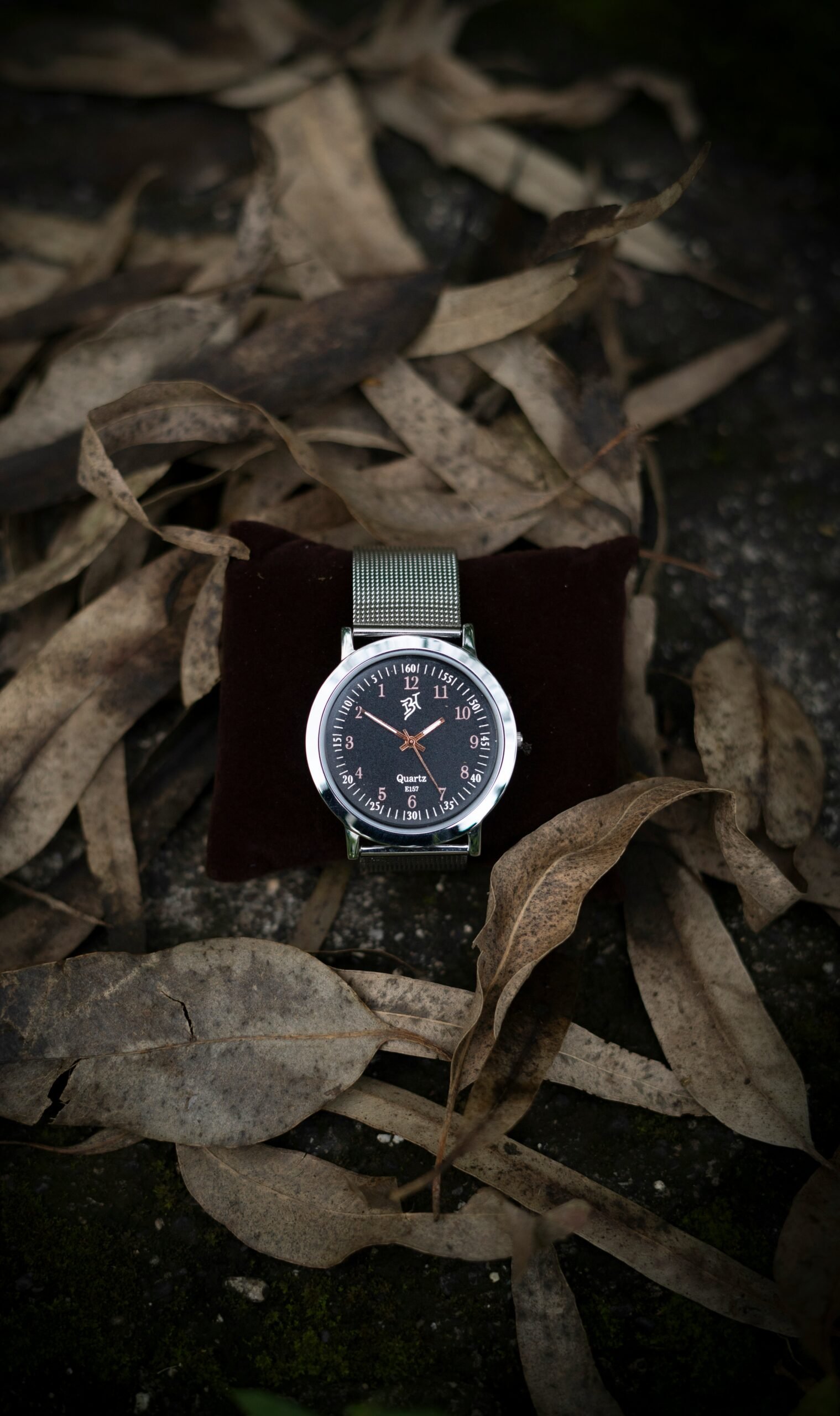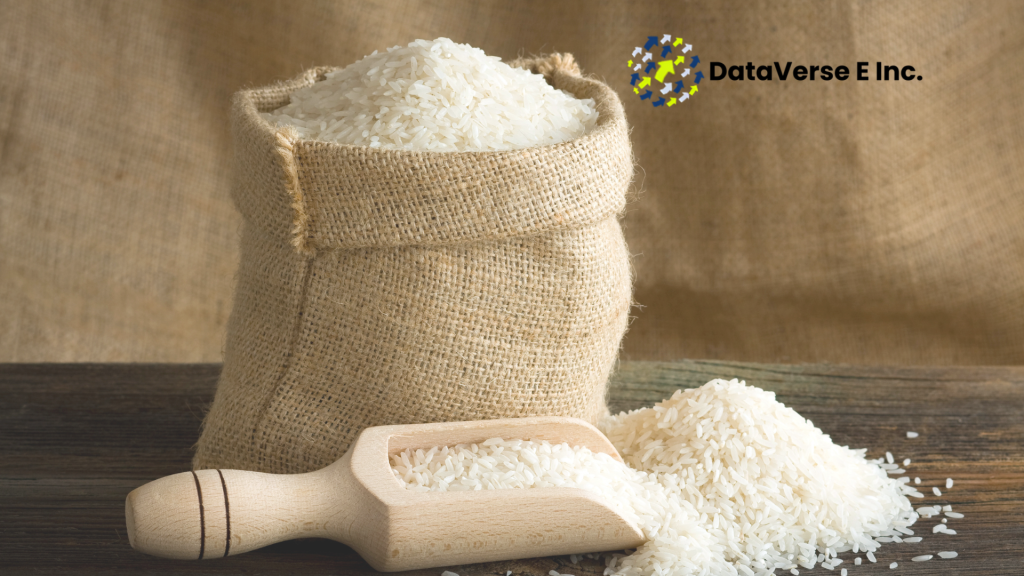Introduction to the Luxury Market
The luxury market represents a significant segment within the global economy, with the luxury watch and jewelry industry being one of its most dynamic components.
This market encompasses a range of high-end products that not only signify status but also reflect individual taste and craftsmanship.
As consumer preferences evolve, the luxury exports from India, particularly in jewelry and timepieces, have seen a notable increase in interest.
The unique designs and skilled artisanship associated with Indian luxury jewelry contribute to its growing reputation on the international stage.
Recent growth trends indicate that the luxury segment is thriving, driven by a combination of economic factors, technological advancements, and changing consumer behavior.
As more individuals attain significant disposable incomes, particularly in emerging markets, there is a heightened interest in luxury items.
This trend is particularly evident among millennials and Gen Z consumers, who are increasingly valuing authenticity and sustainability in their purchasing decisions.
The significance of luxury exports, especially jewelry crafted in India, has garnered attention as they meet the demand for quality and exclusivity.
Moreover, digital access has transformed how consumers engage with luxury brands, paving the way for innovative marketing strategies and new distribution channels.
E-commerce platforms have become essential in facilitating luxury exports, allowing consumers worldwide to purchase luxury watches and jewelry with ease.
This digitization has enabled brands to reach broader demographics, appealing to a more diverse range of consumers and fostering a deeper connection with their products.
As we explore the dynamics of luxury exports, it is essential to recognize the key players and market influencers.
Established brands, along with emerging designers, are carving out their niche, contributing to the vibrant landscape of the luxury watch and jewelry market.
Understanding these trends and factors will provide valuable insight into the future of this industry and its continuing evolution in 2024.
Global Trends Influencing Luxury Exports
The landscape of luxury exports, particularly focusing on jewelry and watches, has undergone notable transformations driven by various global trends.
A pivotal factor affecting this market is the strengthening economic recovery post-pandemic, leading to increased disposable income and shifting consumer behaviors.
As emerging economies continue to grow, there is a marked rise in demand for luxury goods, which extends to export from India, a nation increasingly recognized for its craftsmanship in jewelry manufacturing.
Cultural shifts further impact the demand for luxury exports. Consumers are not only seeking aesthetic value but also uniqueness and authenticity in their luxury purchases.
There is a growing preference for artisanal and locally sourced jewelry, which reflects personal values such as sustainability and ethical sourcing.
This trend has encouraged brands to highlight their heritage and storytelling in marketing, thus creating an intimate connection between products and consumers.
Technological advancements also play a crucial role in reshaping the luxury exports landscape.
E-commerce has emerged as a significant channel for accessing luxury watches and jewelry, particularly among younger consumers.
The convenience of online purchasing, coupled with virtual reality experiences, allows for immersive shopping experiences that traditional markets fail to provide.
Social media platforms are increasingly being leveraged for brand promotion and consumer engagement, significantly impacting how luxury brands market their products.
Additionally, the rise of influencers and digital marketing strategies has changed the narrative surrounding luxury goods, making them more accessible to a broader audience.
These global trends are intertwined, creating a dynamic environment that luxury exporters must navigate carefully.
The focus will increasingly shift towards understanding consumer preferences and leveraging technology to enhance brand loyalty while ensuring the luxury exports from India maintain high standards of quality and excellence.
Emerging Markets and Export Opportunities
The landscape for luxury exports, particularly in watches and jewelry, is rapidly evolving.
Emerging markets, notably in Asia, the Middle East, and parts of Africa, are poised to become significant players in the global luxury sector.
Countries such as India, China, and the UAE represent vast opportunities for exporters aiming to cater to the affluent consumer base.
In Asia, the increasing disposable income and changing consumer preferences are driving the demand for luxury jewelry.
Young consumers, especially in markets like China and India, are gravitating toward both traditional and modern styles, which present exporters with a unique opportunity to diversify their offerings.
Additionally, India’s rich heritage in craftsmanship makes Indian jewelry particularly appealing in these regions.
As luxury exports from India gain recognition for their intricate designs and quality, they are well-positioned to capture the interest of consumers in the broader Asian marketplace.
The Middle East, with its wealth concentration and a penchant for luxury goods, continues to be a formidable market for luxury watches and jewelry.
Cities such as Dubai and Abu Dhabi are not only hubs for luxury retail but also attract high net-worth individuals from all over the world.
Exporters must consider local tastes, which often favor bold, opulent designs, ensuring that their products resonate with the regional aesthetic.
However, challenges such as logistical complexities and market entry barriers must be navigated carefully to establish a foothold in this lucrative market.

Furthermore, parts of Africa, particularly Nigeria and South Africa, are experiencing a gradual rise in luxury consumerism.
As economic growth continues, the demand for high-end products is expected to increase, creating new avenues for luxury exports.
Nonetheless, exporters should remain vigilant about the unique cultural nuances and potential logistical hurdles in these regions.
In conclusion, while emerging markets present vast opportunities for luxury watch and jewelry exports, exporters must tailor their strategies to accommodate local preferences and navigate the associated challenges effectively.
Sustainability in the Luxury Sector
In recent years, sustainability has emerged as a pivotal concern within the luxury sector.
With consumers increasingly prioritizing environmental and ethical considerations, luxury watch and jewelry brands are being compelled to reassess their operational practices and the broader implications of their production processes.
The rising awareness surrounding climate change and resource depletion has transformed customer expectations, leading to a demand for transparency and responsible sourcing within the luxury exports market.
Many luxury brands are now focusing on integrating sustainable practices into their supply chains.
This shift begins with sourcing materials ethically, ensuring that precious stones and metals are obtained from conflict-free zones and through environmentally responsible mining operations.
By collaborating with local communities and adhering to rigorous environmental standards, these brands aim to mitigate the negative impact of their sourcing practices while promoting fair labor conditions.
For instance, some jewelers have begun utilizing recycled metals and lab-grown diamonds, which significantly reduce the ecological footprint of their products.
Furthermore, as the luxury industry adapts to these changing consumer priorities, it is essential for brands to redefine their marketing strategies.
Luxury exports, including jewelry and watches, are increasingly showcasing their commitments to sustainability as a cornerstone of their value proposition.
This not only helps to enhance brand loyalty among environmentally conscious consumers but also plays a crucial role in attracting a broader audience seeking luxury with a purpose.
As luxury brands embrace sustainability, the implications for their export strategies are significant.
By investing in eco-friendly practices and transparent communication, these brands can enhance their competitive edge in the global marketplace.
The future of luxury exports relies on the ability of brands to balance opulence and environmental responsibility, shaping the way high-end products are perceived and valued by consumers.
The Role of E-Commerce in Luxury Exports
The advent of e-commerce has significantly transformed the landscape of luxury exports, particularly in segments such as jewelry and watches.
As consumers increasingly turn to online shopping, digital platforms have emerged as powerful tools that not only facilitate international sales but also enhance accessibility to luxury goods from different parts of the world.
This shift to online retailing plays a crucial role in shaping consumer behavior, as buyers now expect to find their desired high-end products at the click of a button from anywhere globally.
Luxury exports have always relied on brand prestige; however, the integration of e-commerce allows brands to convey their identity more dynamically and interactively.
Through meticulously crafted online marketing strategies, organizations are now creating engaging narratives around their luxury jewelry and watches, setting the stage for a deeper emotional connection with potential customers.
These marketing techniques often include social media campaigns, influencer partnerships, and immersive content, all designed to capture the attention of discerning clientele who value exclusivity and luxury.
The importance of robust online branding cannot be overstated in the context of luxury exports.
A well-designed e-commerce site not only serves as a retail platform but also acts as a virtual showroom where brands can showcase their exquisite craftsmanship and heritage.
Transparency in supply chain practices, coupled with effective storytelling through digital media, is paving the way for trust and loyalty among consumers.
Furthermore, secure payment systems and efficient logistic partners play an integral role in enhancing customer experiences and ensuring successful transactions.
In conclusion, the future of luxury exports, specifically in jewelry and watches, hinges on the effective utilization of e-commerce.
As brands navigate this evolving space, their ability to harness digital platforms will be crucial in defining their success and reaching new global markets.
Challenges in Exporting Luxury Goods
The export of luxury goods, particularly luxury watches and jewelry, presents numerous challenges that stakeholders must navigate to thrive in an increasingly globalized market.
Despite the significant demand for these products, factors such as tariffs, regulations, and logistics can complicate the exporting process.
One of the prominent challenges facing exporters is the imposition of tariffs on luxury goods, which can substantially increase pricing and affect competitiveness in various markets.
Some countries have stringent import duties that can create a financial burden on exporters, particularly those from India that are looking to establish a foothold in international markets.
Understanding the specific tariffs applicable to luxury exports is crucial for effective pricing strategies.
Regulatory compliance is another significant hurdle. Different countries have varying regulations governing the sale and importation of luxury items, including jewelry and watches.
Exporters must ensure they adhere to the legal requirements and standards established in target markets, particularly concerning authenticity and quality.
Failure to comply can result in hefty fines or denial of entry for products, severely impacting business operations.
The issue of counterfeit goods further complicates the landscape of luxury exports.
The prevalence of counterfeit items poses a threat to brand integrity, leading to a loss of consumer confidence in authentic luxury products.
Exporters need to implement robust authentication processes and collaborate with customs authorities to combat this issue, ensuring that genuine products reach consumers and maintaining the reputation of luxury brands.
Additionally, logistical challenges can severely impact the timely delivery of luxury watches and jewelry.
Exporters must manage effective supply chains to mitigate delays and ensure that products are transported securely across borders.
This includes selective partnerships with reliable freight forwarders and understanding the intricacies associated with customs clearances.
Ultimately, while the market for luxury exports from India continues to expand, stakeholders must proactively address these challenges to leverage the opportunities presented by the ever-growing demand for luxury goods globally.
Technological Innovations Shaping the Industry
Technological advancements are significantly influencing the luxury exports sector, particularly in the areas of jewelry and watches.
One of the most prominent innovations is the implementation of blockchain technology, which is revolutionizing how authenticity and provenance are verified.
By creating a secure and immutable record of a product’s journey, blockchain ensures that consumers can trust the luxury items they purchase.
This technology alleviates concerns regarding counterfeiting, a pressing issue in the luxury market, enabling brands to maintain their integrity and assure buyers of the authenticity of their jewelry and timepieces.
In addition to blockchain, artificial intelligence (AI) is playing a vital role in the marketing strategies of luxury goods. Brands are leaning towards AI-driven analytics to gain insights into consumer preferences and behavioral patterns.
This has allowed luxury exports to tailor campaigns that resonate with their target market, ensuring effective engagement and driving sales.
Social media platforms, integrated with AI technologies, enable real-time trend detection, helping jewelry and watch brands adapt their offerings swiftly to meet evolving consumer demands.
Furthermore, advancements in supply chain management are enhancing the efficiency of how luxury items, including jewelry and watches, are produced and delivered.
Technologies such as the Internet of Things (IoT) allow manufacturers to track inventory levels and product movement in real-time, resulting in a streamlined process from production to export from India.
Enhanced logistics and automation also reduce lead times and minimize costs associated with traditional supply chain methods.
This not only improves the delivery of luxury exports but also ensures that brands can meet consumer expectations for quality and timeliness.
As these technological innovations continue to evolve, they promise to reshape the landscape of luxury exports, ensuring an enriched experience for both brands and consumers.
Case Studies of Successful Exporters
The global luxury exports sector has witnessed substantial growth, particularly in the fields of watches and jewelry.
Among the notable success stories are brands like Tanishq, which has effectively emerged as a leader in Indian jewelry exports.
By leveraging traditional craftsmanship combined with contemporary design, Tanishq has captivated international markets.
Their strategic approach to export from India includes establishing partnerships with local retailers in key markets, enhancing their brand visibility while ensuring accessibility to their diverse product range.
Another exemplary case is Raymond Weil, a Swiss watchmaker that has adeptly penetrated global markets, including significant outreach to Indian consumers.
What sets Raymond Weil apart is their smart marketing strategies, which include digital campaigns tailored to various regional demographics.
By utilizing data analytics and customer insights, they have refined their product offerings, presenting designs that resonate well with consumers in different cultural contexts.
Their emphasis on quality and heritage has allowed them to maintain a strong foothold in the export market.
Furthermore, Chopard, renowned for its luxury jewelry and timepieces, has expanded its footprint through a commitment to sustainable sourcing practices.
By aligning their business operations with ecological and ethical standards, they have attracted a conscientious consumer base.
This approach not only enhances their reputation but also outlines a pathway that new entrants can emulate to ensure their luxury exports align with modern consumer values.
These case studies illustrate the importance of adapting to market demands, establishing robust partnerships, and maintaining a focus on quality and sustainability.
Emerging brands in the luxury sector can glean valuable insights from these leaders, especially regarding market entry strategies and the significance of cultural sensitivity in product design and marketing for successful international expansion.
Future Projections for 2024 and Beyond
The luxury exports sector, particularly in the realm of watches and jewelry, is poised for significant growth in 2024 and the following years.
This optimism stems from several key factors that are expected to reshape the market landscape. One of the primary drivers of this anticipated growth is the evolving consumer behavior, particularly among younger demographics.
As millennials and Gen Z increasingly engage with luxury brands, their preference for unique and sustainable products is likely to influence the types of jewelry and watches that will dominate the market.
This shift towards personalization and ethical sourcing will create new opportunities for brands that adapt effectively.
Moreover, technological advancements are set to play a crucial role in the luxury exports market. E-commerce platforms are becoming increasingly sophisticated, enabling brands to reach a global audience more efficiently than ever before.
Virtual try-ons, augmented reality, and artificial intelligence are tools that brands can leverage to provide consumers with a unique shopping experience, thus broadening their customer base.
As a result, exporting luxury jewelry and watches from India could witness a notable increase, as the market becomes more accessible to international customers.
Additionally, the rising disposable income in emerging markets cannot be overlooked. Countries such as India and China are experiencing rapid economic growth, leading to a burgeoning middle class with a growing appetite for luxury goods.
This demographic shift will undoubtedly contribute to the expansion of luxury exports, as consumers in these regions prioritize quality and brand prestige.
Furthermore, factors such as geopolitical stability, trade agreements, and sustainability concerns will continue to influence market dynamics.
In conclusion, the future of luxury exports, particularly in watches and jewelry, appears promising, driven by changing consumer preferences, technological advancements, and economic growth in emerging markets.






No comment yet, add your voice below!